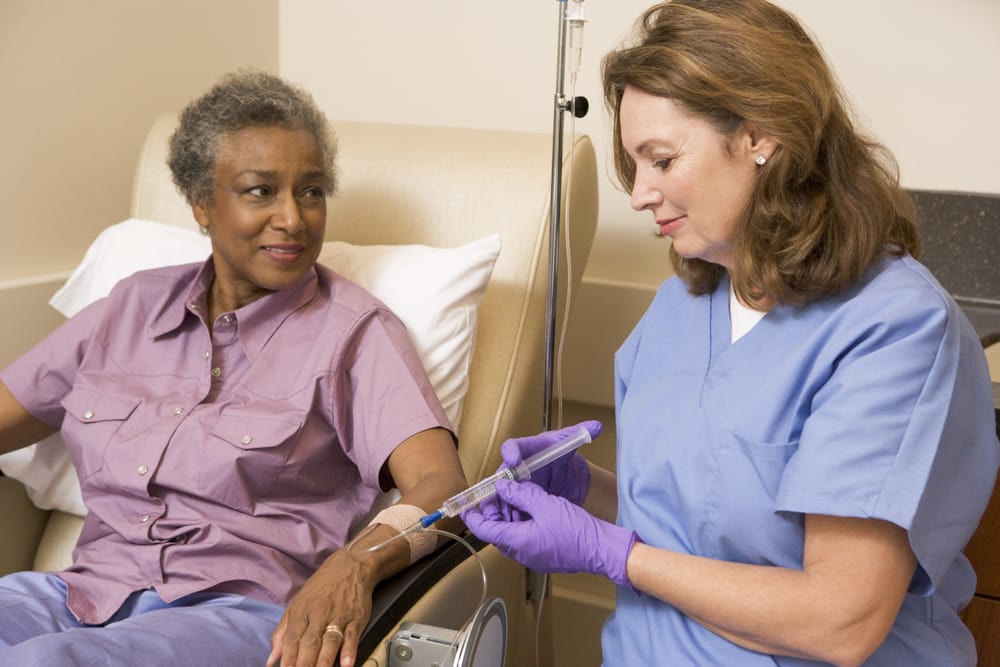Oncology drug shortages have unfortunately become a way of life. This has serious consequences for patient care: an article published by the American Society of Hematology describes situations in which physicians have been forced to ration medications, scramble for alternatives, or administer therapies that patients are mildly allergic to, all because alternatives are unavailable.
While there are many potential solutions to the problem, securing a more reliable source of drug supply is one of the most effective steps that a health system can take. This is especially important for conditions for which there are limited treatments, as a shortage immediately and dramatically impacts patient care.
In these situations, health systems are best served by manufacturers they can rely on to ensure that the right therapies make it into the right hands. Manufacturers can stand out as trustworthy partners by doing two things: one, by partnering with the right active pharmaceutical ingredient makers, logistics firms, and packaging companies, and two, by partnering with manufacturers who have a vision to support patient populations for a long period of time.
More frequent and longer lasting shortages
A recent study published in JCO Oncology Practice found that 64% of healthcare organizations experience at least one drug shortage per month. As a result of these shortages, 75% of organizations report treatment delays, and 13% report an impact to an ongoing clinical trial. These shortages are most common for treating patients with acute lymphoblastic leukemia, or ALL (reported by 44% of institutions), as well as lymphomas (40%) – both of which are treated with vincristine, a generic injectable with no therapeutic equivalent and few global suppliers.
It’s worth noting that a shortage doesn’t mean that a therapy is unavailable. In some cases, a facility may have the therapy in a dosage or form that may not be appropriate for all patients. For example, a hospital pharmacy may only have a 10 mg pill; patients who need a 5 mg pill would theoretically be forced to divide in half a pill that was designed not to be split. Or, a therapy may only be available in an injectable form, which wouldn’t meet the needs of patients who cannot use needles and require oral therapies.
Not surprisingly, drug shortages are linked to an increased risk of medication errors and adverse outcomes, the JCO Oncology Practice paper found, as patients are more likely to be taking a therapy that’s less effective or has more serious side effects than the treatment of choice. Shortages also impact secondary treatments. Many patients are prescribed steroids and opioids to treat the side effects of a primary treatment such as a chemotherapy or immunosuppressant; when secondary treatments are unavailable, patient outcomes worsen, and quality of life suffers.
Unfortunately, as the JCO Oncology Practice noted, drug shortages have only gotten longer and more frequent over the last decade. Several intersecting factors are at play. Supply chains are increasingly globalized, with 73% of raw materials coming from outside the United States. They are also increasingly complex, as it’s common for different manufacturers to produce each component of a sterile injectable. This makes today’s supply chains more susceptible than ever to disruptions that can range from political upheaval to natural disaster.
A domino effect of operational challenges
While the clinical impacts of drug shortages are clear, shortages also set in motion a domino effect of operational challenges that require time and attention, ultimately taking away from the practice of medicine.
In most cases, healthcare organizations face an immediate disadvantage: They may not find out about a shortage until they try (and fail) to place an order with a manufacturer. Without advance notice to develop and execute a plan, this forces a scramble to identify alternative treatment options and mitigate the shortage of the preferred treatment. Organizations may find themselves paying a premium for expedited shipping, or they may engage in “horse trading” tactics to get the therapies they need from other institutions.
That’s just the first step, though. Once organizations have an alternative in hand, there could be additional key tasks.
- Educate staff about the new alternative – how it’s stored and administered, what side effects patients can expect, how it otherwise differs from the preferred treatment, and so on.
- Modify the organization’s guidelines for treatment, recognizing that the modification may be temporary but also in place for an undetermined length of time.
- Update medication administration, pharmacy management, and electronic health record (EHR) systems to reflect the new treatment recommendations.
None of these tasks come easily; all told, JCO Oncology Practice found that facilities dedicate at least 1,000 personnel hours per year to managing drug shortages. This translates to 0.5 FTE, or one person working 20 hours per week. But 92% of organizations receive no additional support, and pushing these management tasks onto already overburdened staff only further contributes to the problem.
Shortages threaten to undo decades of progress
The healthcare industry has been forced to accept the idea that drug shortages are a normal occurrence. This shouldn’t be the case. Health systems – and the patients they serve – deserve better.
Regulatory efforts in the United States are a start, but they aren’t yet doing enough. The Food and Drug Administration (FDA), for example, has the authority to evaluate products that have been manufactured overseas and approve their import to the United States. However, the baby formula shortage that lasted for several weeks in early 2022 – and has returned to certain parts of the country – shows that this process takes a significant amount of time and is a stopgap measure at best.
In addition, provisions of the Coronavirus Aid, Relief, and Economic Security (CARES) Act of 2020 require manufacturers to develop risk management and supply chain redundancy plans and perform risk assessments, and FDA guidance recommends these assessments be reviewed and revised at least once a year. This provision is valuable, but it’s long overdue – and it should have been standard operating procedure for manufacturers long before the pandemic.
That’s why it’s imperative for the industry to focus its attention on bringing proven therapies to market faster, more reliably, and in perpetuity. Our focus at Shorla Oncology is building long-lasting partnerships that position us to bring to market therapies to serve patients who are all too often adversely impacted by drug shortages. Our SH-111 oncology drug, for example, is positioned to treat T-cell lymphoma, a rare and aggressive cancer with few treatment options on the market currently. Our goal is to serve the needs of this patient population and the health systems treating them throughout the care lifecycle and for years to come.
Conditions such as acute lymphocytic leukemia and T-cell lymphoma were regarded as a death sentence in the 1950s, but today their five-year survival rate is 90% thanks to targeted therapies and multi-agent treatment regiments. Drug shortages threaten to undo decades of progress and leave patients with fewer options. Helping health systems secure a reliable supply of much-needed therapies can help to mitigate the impact of shortages and ensure patients get the treatments they need when they need them.
About Nicholas Holsman
Nicholas Holsman is Chief Commercial Officer at Shorla Oncology. Previously he worked at Oncopeptides and served in positions at KemPharm, Symphony Health Solutions, NextWave Pharmaceuticals, and Gilead.
Cool Photos from Depositphotos








